Bikaner, a city steeped in royal history and architectural grandeur, is home to some of Rajasthan’s most fascinating forts. Beyond its famous Junagarh Fort, Bikaner offers a diverse collection of lesser-known yet remarkable fortifications that tell the story of its regal past. Each of the Bikaner forts showcases a unique blend of Rajput, Mughal, and British architectural influences. They also offer visitors a glimpse into the rich history, valour, and culture of the region. Whether you’re a history buff or an architecture enthusiast, exploring these forts will transport you back in time. Immerse yourself in the splendour of Bikaner’s kings and their lasting contributions!
7 Bikaner Forts You Cannot Miss Visiting
Known for their remarkable historical significance, these seven Bikaner forts are a must-visit for all tourists and architecture enthusiasts:
1. Junagarh Fort
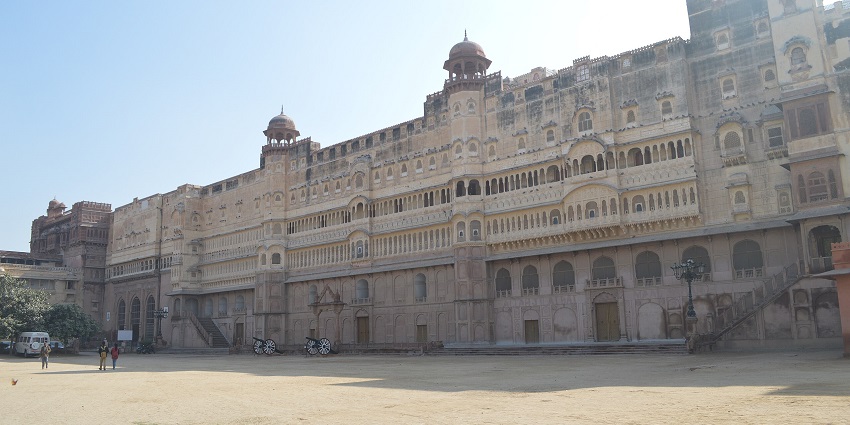
Photo: Shivani28g / Wikimedia Commons
Built in the 16th century by Raja Rai Singh, Junagarh Fort is one of Bikaner’s most iconic landmarks. Unlike many other forts in Rajasthan, it was never conquered by invaders, reflecting its strategic strength. This Bikaner fort (Rajasthan) is an architectural marvel with beautifully carved red sandstone walls and stunning interiors. The grand palaces inside, including the Karan Mahal and Anup Mahal, are adorned with intricate frescoes and gold leafwork. The museum houses an incredible collection of ancient weaponry, manuscripts, and royal memorabilia. This is one of the best forts in Bikaner which is evident by its majestic size.
Timings: 10 AM – 4:30 PM
Entry Fee: ₹50 / $0.60 (for Indians), ₹300 / $3.60 (for foreigners)
Major Attractions: Karan Mahal, Anup Mahal, Chandra Mahal, Junagarh Fort Museum
Suggested Read: Discover Fascinating Places To Visit In Bikaner For A Cultural Retreat
2. Lalgarh Palace
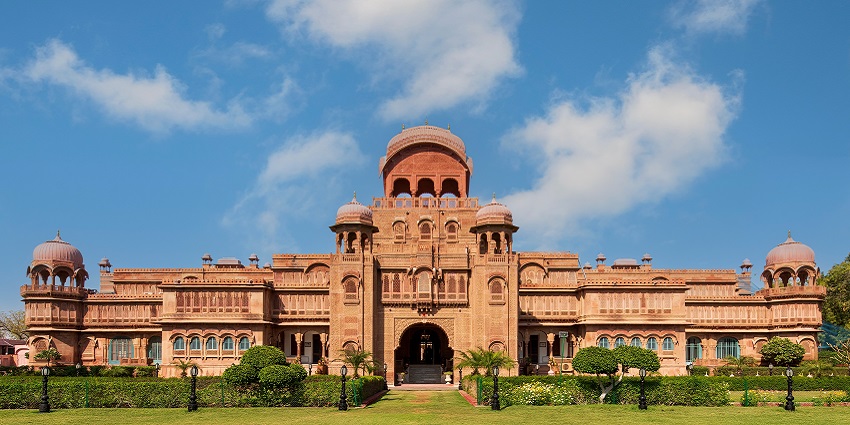
Photo: Krishnan4079 / Shutterstock
Although more of a palace, Lalgarh is a grand Indo-Saracenic structure with strong fort-like qualities and historical significance. Designed by Sir Samuel Swinton Jacob, Lalgarh Palace showcases a blend of Mughal, Rajput, and European architecture. It is one of the most popular Bikaner forts among visitors. Built by Maharaja Ganga Singh in the early 20th century, the palace is a beautiful structure with intricate stone carvings and spacious lawns. The red sandstone architecture exudes an old-world charm, while the extensive gardens and lawns provide a tranquil atmosphere. Inside, the lavish Durbar Hall and intricate carvings on the ceilings offer a glimpse into the opulent lifestyle of Bikaner’s royals.
Timings: 10 AM – 5 PM
Entry Fee: ₹10 / $0.12
Major Attractions: Laxmi Niwas Palace, Lalgarh Museum, Royal family portraits
3. Gajner Palace
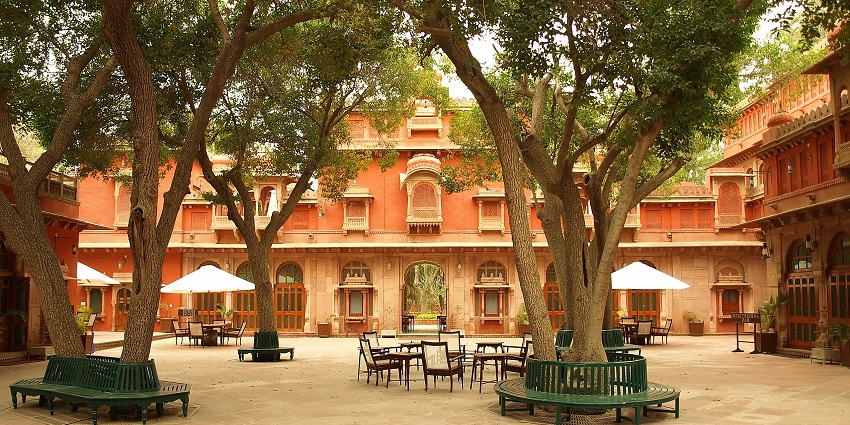
Photo: jokertrekker / Wikimedia Commons
Once the Maharajas of Bikaner used this palace as a hunting getaway, it is now situated along the tranquil Gajner Lake. Surrounded by thick forests, it is now a luxury hotel with remarkable Bikaner fort characteristics, preserving the royal charm while offering a tranquil escape. The palace is known for its proximity to a wildlife sanctuary and offers scenic views of the desert landscape. The palace, now a heritage hotel, is known for its royal charm, with elegant rooms, carved balconies, and wide courtyards. Wildlife enthusiasts will enjoy the nearby Gajner Wildlife Sanctuary, where antelope, wild boar, and exotic birds can be spotted. It is among the top Bikaner forts attracting many visitors every day.
Timings: 24*7
Entry Fee: ₹500 / $6.00 (for non-residents)
Major Attractions: Lakeside views, Wildlife Sanctuary, Luxury Heritage Hotel
Suggested Read: Bikaner Museums
4. Bikaji Ki Tekri
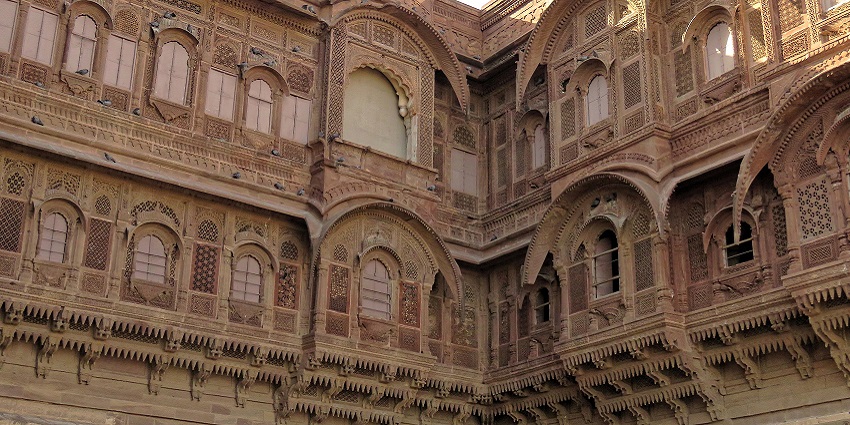
Photo: Pawar Pooja / Wikimedia Commons
Bikaji Ki Tekri is the original site where Bikaner’s founder, Rao Bika, built the first fort, laying the foundation for the city. Although little remains of this ancient structure (most of it is in old Bikaner fort pictures), its historical significance is immense. This humble hilltop site marks the birthplace of Bikaner’s royal lineage, offering visitors a rare glimpse into the origins of this desert kingdom. From the top of the Tekri, one can enjoy panoramic views of Bikaner’s modern skyline blending with its historical architecture, symbolising the city’s rich past and dynamic present.
Timings: 24*7
Entry Fee: N/A
Major Attractions: Historic ruins, scenic surroundings, views of the city
5. Nal Fort
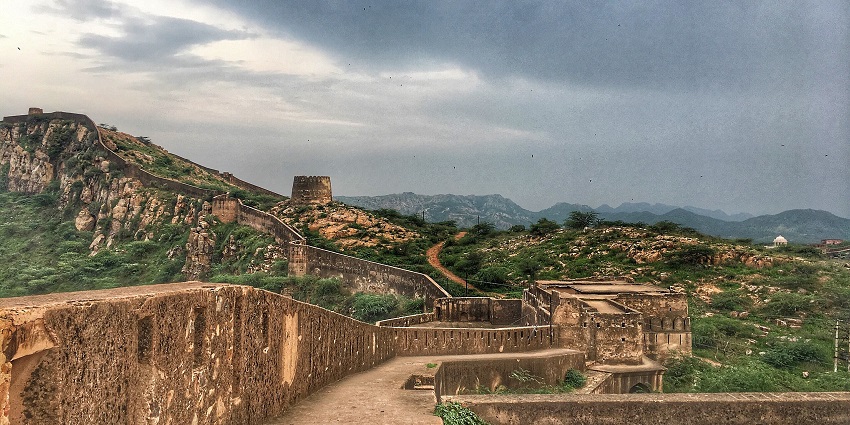
Photo: Vkvikas3 / Wikimedia Commons / Image For Representation Only
Located a short distance from Bikaner, Nal Fort offers a peaceful and offbeat exploration experience. Though smaller than some of Rajasthan’s grander forts, it holds a quiet charm and historical significance that shouldn’t be overlooked. Built during the reign of Maharaja Ganga Singh, the fort has stood the test of time, showcasing traditional Rajput military architecture. The Bikaner for review reveals that the fort’s surroundings offer an authentic rural Rajasthani experience, with vast open spaces and local villages. A walk through the remnants of Nal Fort brings visitors close to the region’s lesser-known history and allows for a tranquil escape from the city’s hustle.
Timings: 9 AM – 6 PM
Entry Fee: ₹50 / $0.60
Major Attractions: Historic architecture, quiet surroundings, local village atmosphere
Suggested Read: Things To Do In Bikaner
6. Chintamani Fort
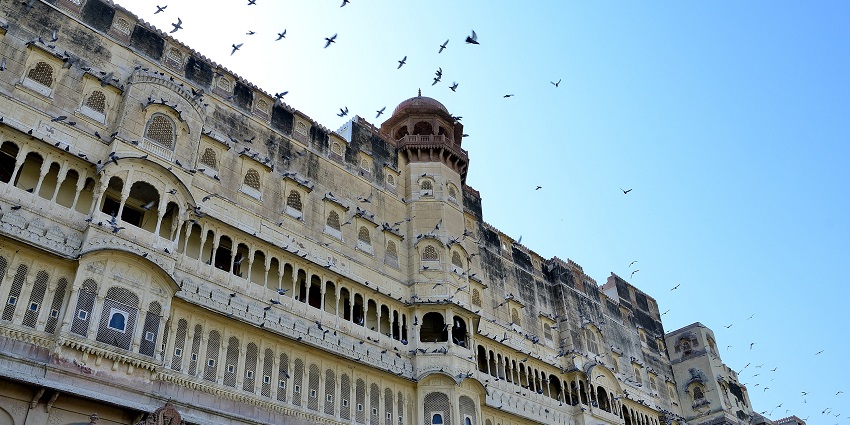
Photo: Sharvarism / Wikimedia Common / Image For Representation Only
Chintamani Fort is a hidden gem, located in the tranquil outskirts of Bikaner. Its walls, weathered by time, tell stories of an era long past. The fort, although less grand than others in the region, holds a deep spiritual significance, with shrines and relics that attract pilgrims and history enthusiasts alike. Its rustic architecture, with ancient stone walls and partially restored sections, adds to its mystical aura. The fort is ideal for visitors looking to explore lesser-known historical sites and experience the serene, untouched side of Rajasthan. The surrounding landscape offers picturesque views and a peaceful retreat.
Timings: 9 AM – 5 PM
Entry Fee: ₹20 / $0.24
Major Attractions: Fort walls, historical structures, spiritual importance
7. Anupgarh Fort
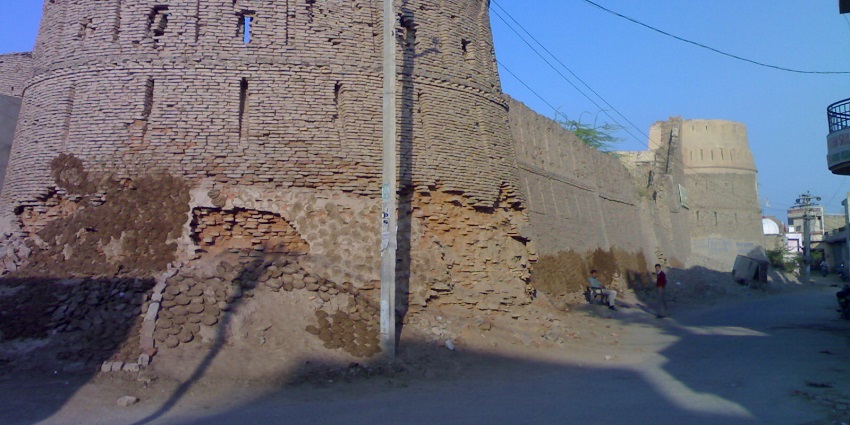
Photo: Ser Amantio di Nicolao / Wikimedia Commons
Anupgarh Fort, located on the outskirts of Bikaner, is a hidden treasure that history buffs will enjoy. Though in ruins now, it still exudes a rustic charm, with crumbling walls and watchtowers that stand as a reminder of Rajasthan’s glorious past. The fort’s isolated location makes it a peaceful spot for quiet exploration. Built during the Mughal era, Anupgarh Fort offers a glimpse into the military strategies and architectural styles of its time. It is perfect for those who enjoy exploring off-the-beaten-path historical sites, with the open desert surrounding it providing a stunning backdrop for reflection.
Timings: 9 AM – 6 PM
Entry Fee: N/A
Major Attractions: Ruins of the fort, desert landscape, Mughal-era history
Suggested Read: Places To Visit Near Bikaner For A Serene Getaway In The Golden Land
The Bikaner forts are more than just architectural marvels; they are gateways to a time when kings ruled with valour and grandeur. Each fort tells a tale of bravery, royal splendour, and cultural heritage that resonates through the ages. As you wander through these ancient fortresses, you’ll find yourself captivated by their stories. Uncover even more hidden gems in Bikaner’s royal legacy by planning a seamless trip through TripXL!
Cover Photo: Pablo Nicolás Taibi Cicaré / Wikimedia Commons


 WhatsApp
WhatsApp
 Twitter
Twitter









